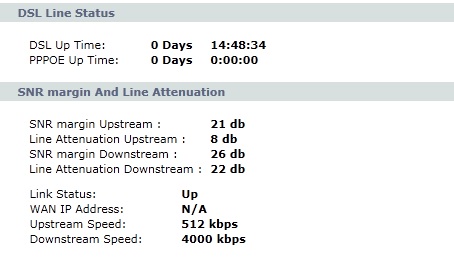منم با توجه به این اطلاعات یه مشکل جدی روی خطم هست.بعضی موقع ها لینکم میپره اما قابل تحمله
دیگه نمیشه کاریش کرد.باید بسازیم

اون دان استریمی که گذاشتی فکر نکنم با اونی که توی نرم افزار اکانتینگ تعریف میکنن یکی باشه الا برای من را نگاه ولی سرعتم بیشتر از 250 260 نمیشه چون توی اکانتینگ 2مگ تعریف کردن
خط ریلکس به این میگن.دی:

آهان پس بگو شرکتیه
رفتم آی اس پی میگم سرعتم کمه
میگه مشکل از خط تلفنته
ازش پرسیدم دون استریم من رو روی چند گذاشتید میگه ما فقط یه سرعت براتون تعریف کردیم که 256 هست
حالا دوستان چند تا سوال:
1.راسته که خطی که رانزه میکنه یه ای اس پی تا پایان قرارداد اگر من بخوام از یه جا دیگه ای دی اس ال بگیرم تخلیه نمیکنن؟
2.سرعت من الان 90 کیلوبیته در صورتی که هزینه 256 دادم،جایی واسه شکایت هست؟
شکایت کنم چیزی توش هست؟
3.اینکه گفتن مشکل از خطه ممکنه درست باشه؟
سیم کشی کل ساختمان رو عوض کردم واسپلیتر و ... هم سالمن
میتونی تخلیه کنی ولی فکر نکنم پولی بهت بدن
تنظیم مقررات
کد:
برای مشاهده محتوا ، لطفا وارد شوید یا ثبت نام کنید
از هیچی بهتر
قبل از شکایت شما مودمت را ببر سر خط ببین نویزت درست میشه یا نه
همونطور که دوستمون گفت شاید با کم کردن دان استریم هم درست بشه اگه مورد بالا جواب نداد
فاصلتون تا مخابرات محلتون چند کیلومتره؟
SNR or Signal to Noise Ratio:
Describes the ratio of usable data-signals on your line. You can associate the "signal" with the data traveling across your ADSL-line and the "noise" as the unwanted interference affecting the signal. The higher the number the better for this measurement. In some instances interleaving can help raise the noise margin to an acceptable level.
6dB or below is bad and will experience no synch or intermittent synch problems
7dB-10dB is fair but does not leave much room for variances in conditions
11dB-20dB is good with little or no synch problems
20dB-28dB is excellent
29dB or above is outstanding
If your SNR is below 12dB you are pretty much screwed and will not get a consistent level of ADSL-service. You could try to convince Telkom to rewire the cabling - but this is unlikely to happen.
Attenuation:
Is the reduction in signal strength on your phone line. In ADSL this may be reported as "loop loss" and is the natural deterioration of the ADSL signal over distance from the exchange. Attenuation is normally directly linked to the length of your line. Copper is traditionally used in the local loop and the higher gauge of copper will give the best signal, however some lines may have some aluminium or aluminium joints on the line which will increase resistance... as will oxidisation of joints. The lower the dB the better for this measurement.
20dB and below is outstanding
20dB-30dB is excellent
30dB-40dB is very good
40dB-50dB is good
50dB-60dB is poor and may experience connectivity issues
60dB or above is bad and will experience connectivity issues
The standard signal attenuation spread for a given speed is somewhere in the region of 25-30dB for ADSL1 speeds (if we had ADSL2/2+ this would be).
The following guide (distance vs. attenuation vs speed) gives you an guestimate what you can achieve:
<1km should be 23-24Mbit (nice speed, but doesn't it bug you that Telkom people walk through your bedroom?)
1.0km = 13.81dB = 23Mbit
1.5km = 20.7dB = 21Mbit
2.0km = 27.6dB = 18Mbit
2.5km = 34.5dB = 13Mbit
3.0km = 41.4dB = 8Mbit
3.5km = 48.3dB = 6Mbit
4.0km = 56dB = 4Mbit
4.5km = 62.1dB = 3Mbit
5.0km = 69dB = 2Mbit
>5.0km (you are pretty much poked --- sorry for you)





 جواب بصورت نقل قول
جواب بصورت نقل قول








